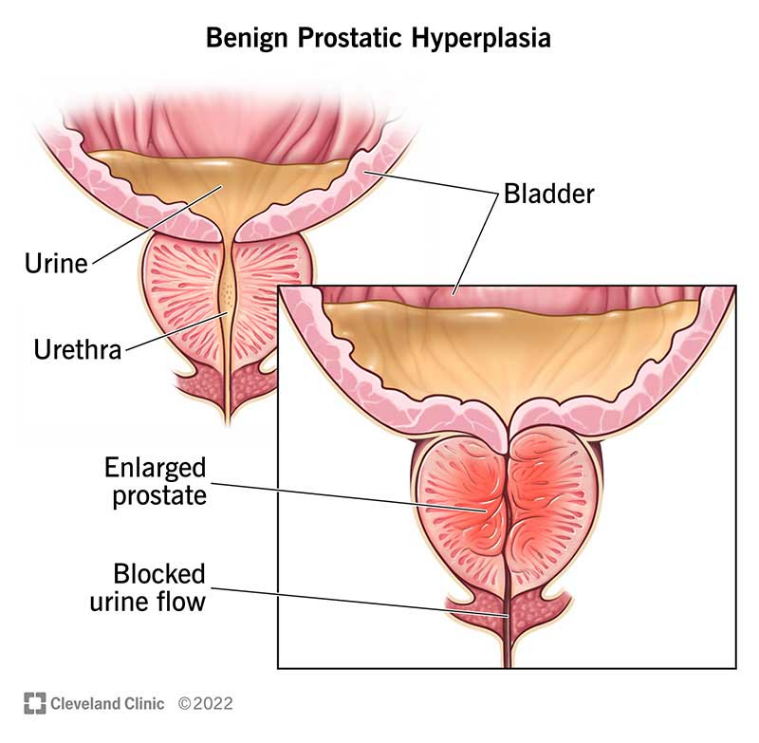A nurse is caring for a client who has erectile dysfunction. Which of the following lab tests should the nurse expect will be ordered to evaluate this client? (Select All that Apply.)
Thyroid stimulating hormone
Blood glucose
Partial thromboplastin time
Testosterone
Total cholesterol
Correct Answer : A,B,D,E
Choice A reason: Thyroid stimulating hormone (TSH)
TSH levels can affect sexual function. Both hyperthyroidism and hypothyroidism can lead to ED. Hyperthyroidism can cause premature ejaculation, while hypothyroidism can reduce libido and cause ED. Therefore, assessing thyroid function is important in the evaluation of ED.
Choice B reason: Blood glucose
Diabetes mellitus is a common cause of ED. High blood glucose levels can damage blood vessels and nerves that control erection. Therefore, testing for diabetes with a blood glucose test is a standard part of the ED evaluation.
Choice C reason: Partial thromboplastin time (PTT)
PTT is not typically used to evaluate ED. It measures the time it takes for blood to clot and is usually used to assess bleeding disorders or the effectiveness of blood-thinning medication.
Choice D reason: Testosterone
Low testosterone levels can lead to a decrease in sexual desire and ED. Testosterone replacement therapy may improve the situation if this is the case. Hence, measuring testosterone levels is a critical part of the ED workup.
Choice E reason: Total cholesterol
High cholesterol can lead to atherosclerosis, which can impede blood flow to the penis and cause ED. Therefore, a lipid profile, including total cholesterol, is often checked when evaluating ED.
Nursing Test Bank
Naxlex Comprehensive Predictor Exams
Related Questions
Correct Answer is A
Explanation
Choice A Reason:
Administering antibiotics is a primary intervention for AGN when it is caused by a bacterial infection, such as post-streptococcal glomerulonephritis. Antibiotics help eliminate the infection and prevent further damage to the glomeruli.
Choice B Reason:
Encouraging increased fluid intake is not typically recommended for AGN, especially if the client has oliguria or edema, which are common in this condition. Fluid intake may need to be restricted to prevent fluid overload and worsening of hypertension.
Choice C Reason:
Frequent ambulation is not a priority intervention for AGN. While maintaining mobility is important, it does not directly address the renal inflammation or potential complications associated with AGN.
Choice D Reason:
Obtaining weight weekly is important for monitoring fluid status, but it is not the primary intervention. Daily weight measurements are more indicative of fluid retention or loss and are essential for closely monitoring the client's fluid balance.
Correct Answer is C
Explanation
Choice A reason:
Danazol is a synthetic steroid that is typically used to treat endometriosis and fibrocystic breast disease. It is not indicated for the treatment of benign prostatic hyperplasia (BPH) and could potentially worsen symptoms due to its androgenic effects.
Choice B reason:
Methyltestosterone is an anabolic steroid with androgenic properties, similar to the male hormone testosterone. It is used to treat men with testosterone deficiency. However, it is not used for BPH treatment and, like danazol, could exacerbate BPH symptoms due to its androgenic activity.
Choice C reason:
Finasteride is a 5-alpha reductase inhibitor that is commonly prescribed for the treatment of BPH. It works by inhibiting the conversion of testosterone to dihydrotestosterone (DHT), a hormone that contributes to prostate growth. By reducing DHT levels, finasteride can help shrink the prostate and alleviate urinary symptoms associated with BPH.
Choice D reason:
Fluoxymesterone is another anabolic steroid with testosterone-like effects. It is used to treat conditions associated with a deficiency or absence of endogenous testosterone. It is not suitable for BPH treatment and could potentially worsen the condition due to its androgenic properties.

Whether you are a student looking to ace your exams or a practicing nurse seeking to enhance your expertise , our nursing education contents will empower you with the confidence and competence to make a difference in the lives of patients and become a respected leader in the healthcare field.
Visit Naxlex, invest in your future and unlock endless possibilities with our unparalleled nursing education contents today
Report Wrong Answer on the Current Question
Do you disagree with the answer? If yes, what is your expected answer? Explain.
Kindly be descriptive with the issue you are facing.
